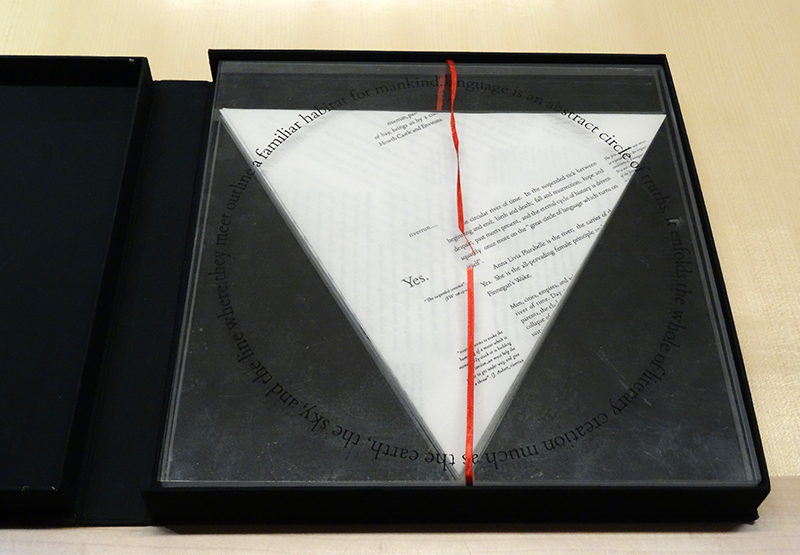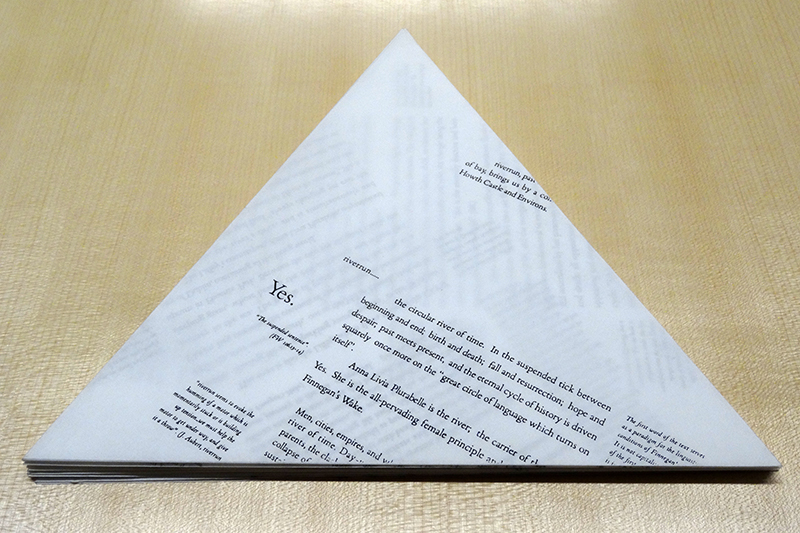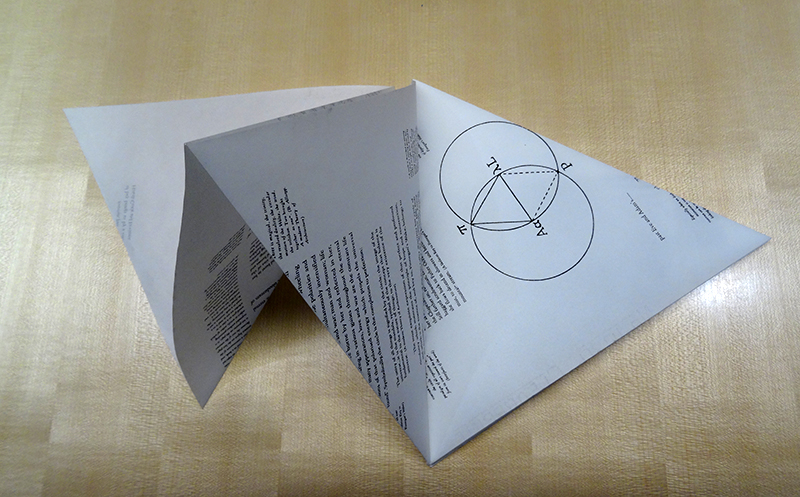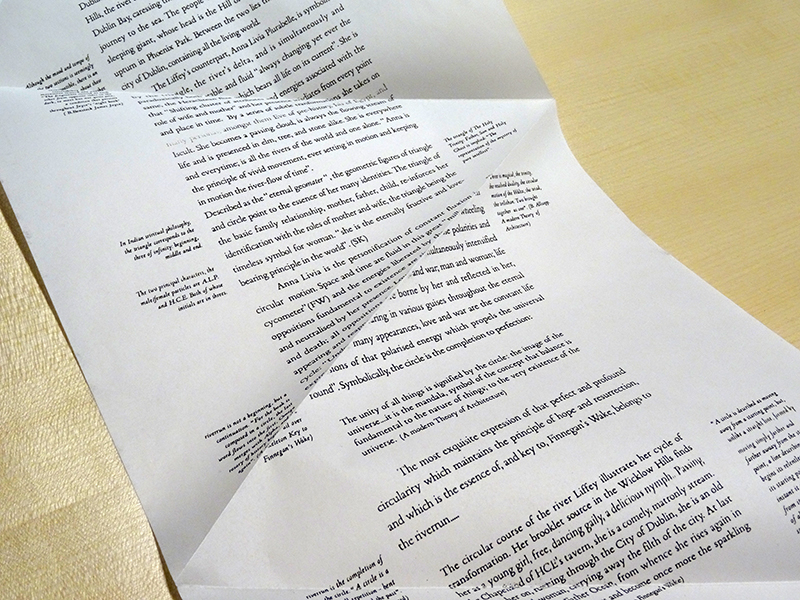
My thesis was an attempt to summarize the main ideas of Joyce’s most infamously opaque work, Finnegan’s Wake, and its underlying thematics, in an artist’s book. Rather than yet another text explaining the text through yet more language (in an infinite regress!), I wanted to make something which could be experienced as well as read: an immersive encounter with the work, and a presentation rather than a representation.
The book I made consisted of a long strip of paper, twisted into the shape of a Mobius strip. The Mobius strip is the symbol for infinity, and provided a circular structure which allowed the last sentence to start in the middle of the first sentence of the book: Joyce’s deeply embedded reference to “the eternal.” This strip folded down into a triangular form (one of the key geometric themes of Finnegan’s Wake), and was then embedded between thick sets of plexiglass.


The late Alvin Eisenman was my thesis advisor. He was hugely influential in both the shaping of the work, and along the way we had many a long, meandering conversation about the specifics of James Joyce’s radical modernist works. We butted heads over one aspect of the work. Alvin was interested in a new mode of literary organization, called Hypertext, which was at that time being developed through the work of George P. Landow and others, at Brown University. He felt that Joyce’s work was crying out for a hypertextual approach, which would use the computer (a novel device at that that time), to allow the reader to move seamlessly through sections; exploiting and making explicit the myriad interconnections within “The Wake.” However, I felt that it should be a non-digital experience; one which relied on the physicality of the book itself to present the experience of language as a seamless flow; one which took you on a material journey. I felt that to experiment with these new forms of digital literature would distract attention away from the content. I was probably wrong.
The book was entirely made by hand and the text was produced on an Apple Macintosh Classic computer, and printed digitally. I did experiment with setting the text in metal, to be letterpress printed on a Vandercook, using on the Linotype machine that the Yale school of Design had at that time. However, after some time spent taming that beautiful beast’, it started to spit out molten lead at me, and so I thought better of it. Only one full copy of the book exists, and this is the one in the Beinecke Rare Book Library.

The work was extremely significant in my thinking about language, and about the possibility of a material enactment of ideas drawn from philosophies of language, a number of which I read extensively, as I made the work. I ended up doing a PhD in philosophy of language, and exploring in much more detail, the ways in which language might have a sensuality that escapes classical logic, or the expectation to represent things/concepts unambiguously, and this is very much influenced by my encounters with James Joyce. I’m currently working on a project entitled “The Cruelty of the Classical Canon,” which extends these ideas into a very extreme physical encounter with “bookness” and language. So my thesis became the cornerstone for my later academic and creative work, and has been highly influential in my thinking.

